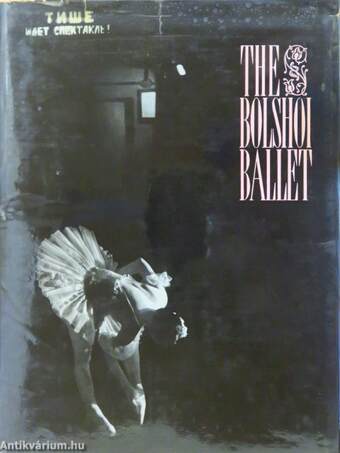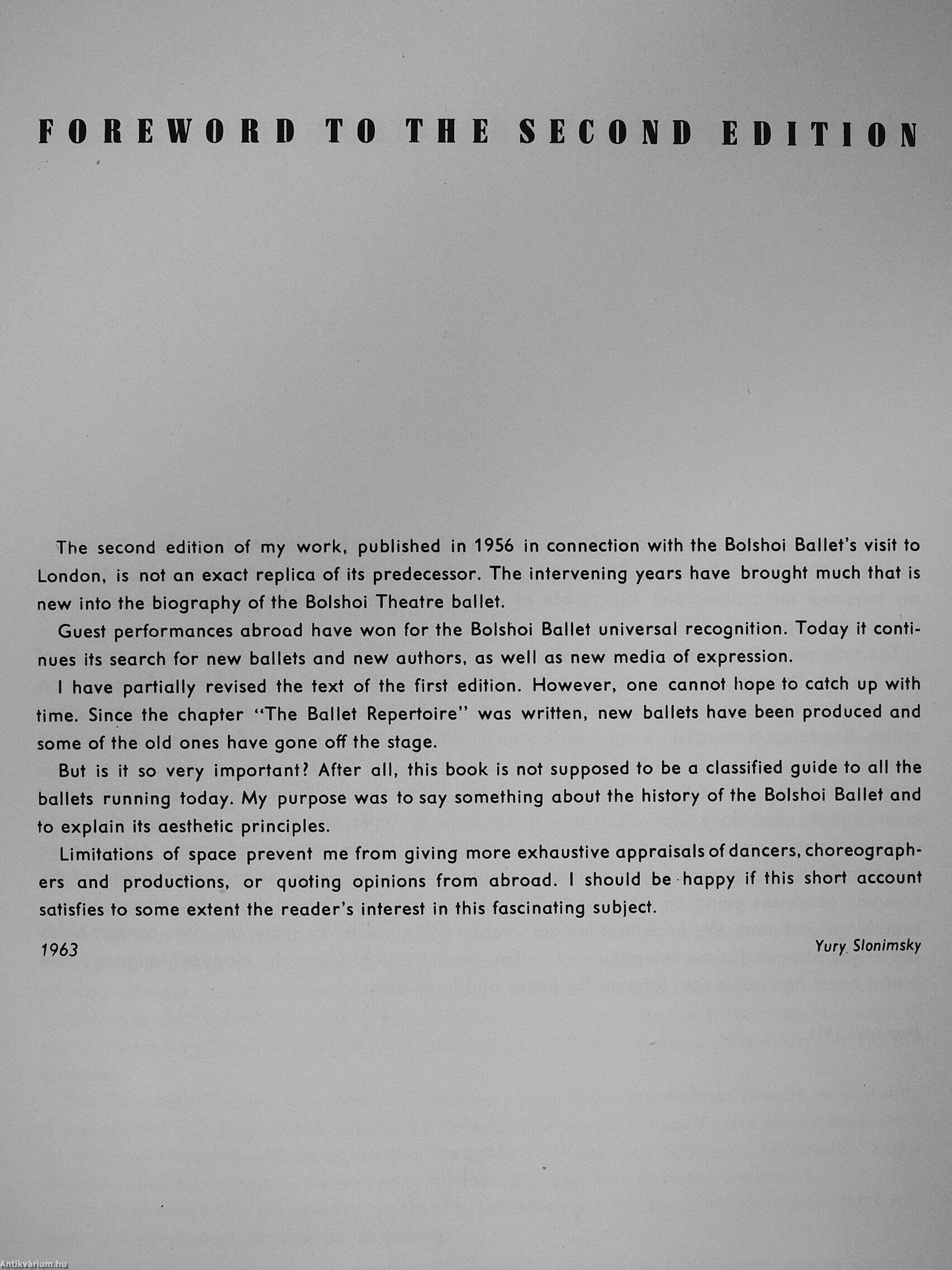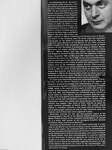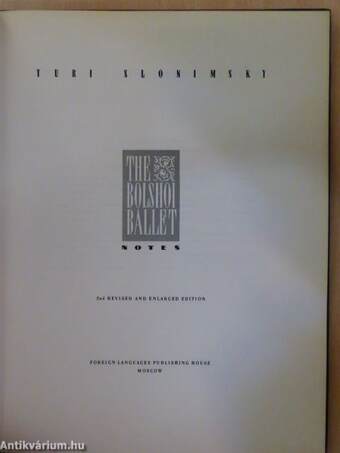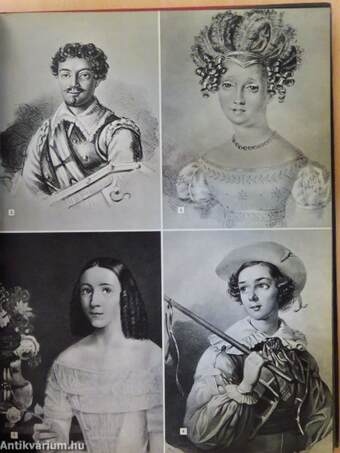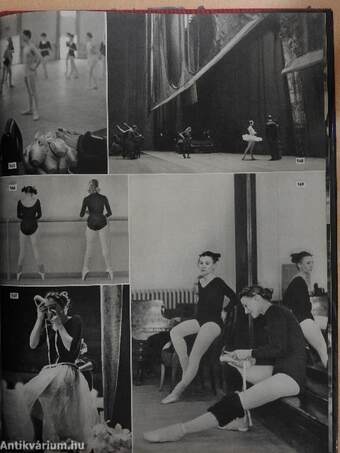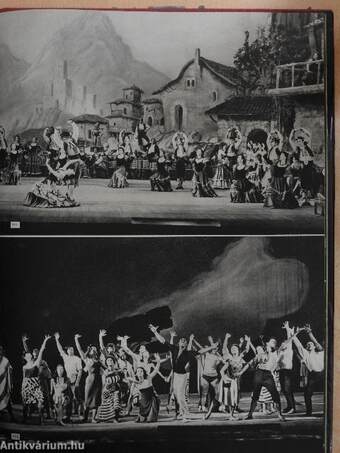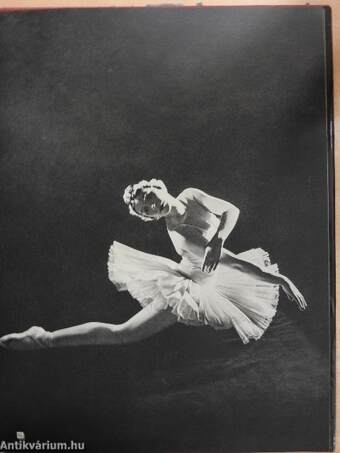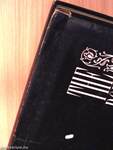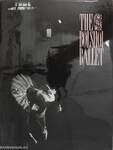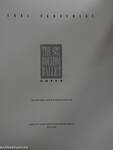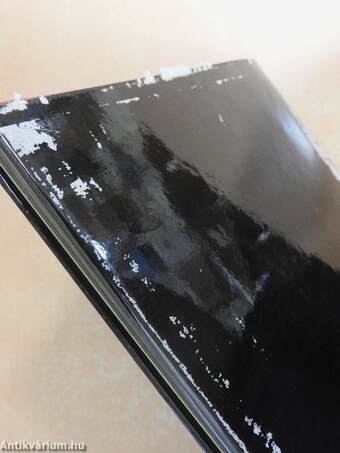1.116.670
kiadvánnyal nyújtjuk Magyarország legnagyobb antikvár könyv-kínálatát
The Bolshoi Ballet Notes
| Kiadó: | Foreign Languages Publishing House |
|---|---|
| Kiadás helye: | Moszkva |
| Kiadás éve: | |
| Kötés típusa: | Vászon |
| Oldalszám: | 127 oldal |
| Sorozatcím: | Soviet Arts |
| Kötetszám: | |
| Nyelv: | Angol |
| Méret: | 30 cm x 22 cm |
| ISBN: | |
| Megjegyzés: | Fekete-fehér fotókkal. |
naponta értesítjük a beérkező friss
kiadványokról
naponta értesítjük a beérkező friss
kiadványokról
Előszó
TovábbFülszöveg
Yuri Slonimsky, M. A., the prom-inent Soviet ballet histórián, critic and authorof manyballet scenarios, was born in Petersburg on March 12, 1902. He was educated at the Law School, University of Petrograd and Institute of History of Arts (Theatre Oivision). Slonimsky developed an interest in ballet in his early youth and between 16 and 18 actually took classes in order to obtain a first-hand knowledge of its technique. He started ballet criticism in 1919 with his first reviews of ballet perform-ances at the State Opera and Ballet Theatre (formerly Mariinsky) and
ballet research in 1922 by translating into Russian somé of Nover-re's letters. In the following years he wrote small but important monographs on the ballets La Sylphide and Giselle. His next important work Masters of the Ballet of the 19th century (1937) brought him wide recognition and became known to ballet scholars all over the world. It contained essays on Didelot, Perrot, Saint-Léon, Lev Ivanov and Marius Petipa.... Tovább
Fülszöveg
Yuri Slonimsky, M. A., the prom-inent Soviet ballet histórián, critic and authorof manyballet scenarios, was born in Petersburg on March 12, 1902. He was educated at the Law School, University of Petrograd and Institute of History of Arts (Theatre Oivision). Slonimsky developed an interest in ballet in his early youth and between 16 and 18 actually took classes in order to obtain a first-hand knowledge of its technique. He started ballet criticism in 1919 with his first reviews of ballet perform-ances at the State Opera and Ballet Theatre (formerly Mariinsky) and
ballet research in 1922 by translating into Russian somé of Nover-re's letters. In the following years he wrote small but important monographs on the ballets La Sylphide and Giselle. His next important work Masters of the Ballet of the 19th century (1937) brought him wide recognition and became known to ballet scholars all over the world. It contained essays on Didelot, Perrot, Saint-Léon, Lev Ivanov and Marius Petipa. Three of these—"Jules Perrot", "Marius Petipa" and "Lev Ivanov" had been translated into English by Anatole Chujoy. (The first two appeared in Dance Index, December 1945 and May-June 1947 respectively, the latter— in Dance Perspective, No.2, 1959.) In the same period Slonimsky took an active part in the lives of the Leningrád and Moscow ballet schools lecturing on the history of ballet and editing ballet publi-cations such as the handsome volume Klasiki Khoreografii (Classics of Choreog raphy), published by the Leningrád ballet school in 1937, for which he alsó wrote essays on Carlo Blasis and August Bournonville, and Reminiscences of a Bal letmaster, published in 1940 by the Moscow ballet school on whose request he wrote the introductory article "The Birth of the Moscow Ballet" and prepared the entire Gluszkowski manuscript for publication.
In recent years Slonimsky wrote two outstanding books: Tchai-kovsky and the Ballet Theatre of His Period, wherein he showed a profound knowledge and understanding of music, a gift rare and most valuable in a ballet critic, and a biography of Didelot (1958), which is the result of thirty years of study and contains a wealth of little-known or heretofore unpublished material. Begin-ning with 1957, Yuri Slonimsky has contributed yearly articles on Soviet ballet for The Ballet Annual (London). Since the publi> cation of the first edition of his Bolshoi Theatre Ballet in 1956, he has revised and considerably augmented the volume, adding information about new ballets and young dancers and writing an entirely new chapter "Our Point of View" wherein he poses the main aesthetic principles of Soviet ballet. The present second edition is, therefore, virtually a new book, with an entirely new set of photographs selected not only for their historical value, but because most of them have never appeared in print.
Slonimsky lectured (in the war and post-war years) at the Choreographers' Faculty of the Moscow Theatre Institute and the Ballet Tuition Faculty of the Leningrád Conservatoire. At present he is a senior staff worker of the Leningrád Scientific Institute of Theatre, Music and Cinema Research.
Summing up Slonimsky's role in our ballet scholarship it is pos-sible to say that he was the first to bring a sound scientific ground-ing to ballet studies. He combined efforts for the development of the then young Soviet ballet science and literature with participation in the actual practice of Soviet choreography, since many of success-ful Soviet ballets have been choreographed to scenarios supplied by Yuri Slonimsky. In these he appeared not merely as a drama-turgist of no small mean. Knowing the very essence of the art of ballet in all its details he frequently suggested the nature of many of the dances and mises en scéne to the choreographer. His most important ballets to date are Youth, The Path of Thunder and Coast of Hope. Vissza
Témakörök
- Művészetek > Táncművészet
- Idegennyelv > Idegennyelvű könyvek > Angol > Művészetek > Színház
- Idegennyelv > Idegennyelvű könyvek > Angol > Művészetek > Táncművészet
- Művészetek > Színház > Színházi műfajok > Tánc
- Művészetek > Színház > Idegen nyelv > Angol
- Művészetek > Színház > Színházak > Külföldi > Egyéb


